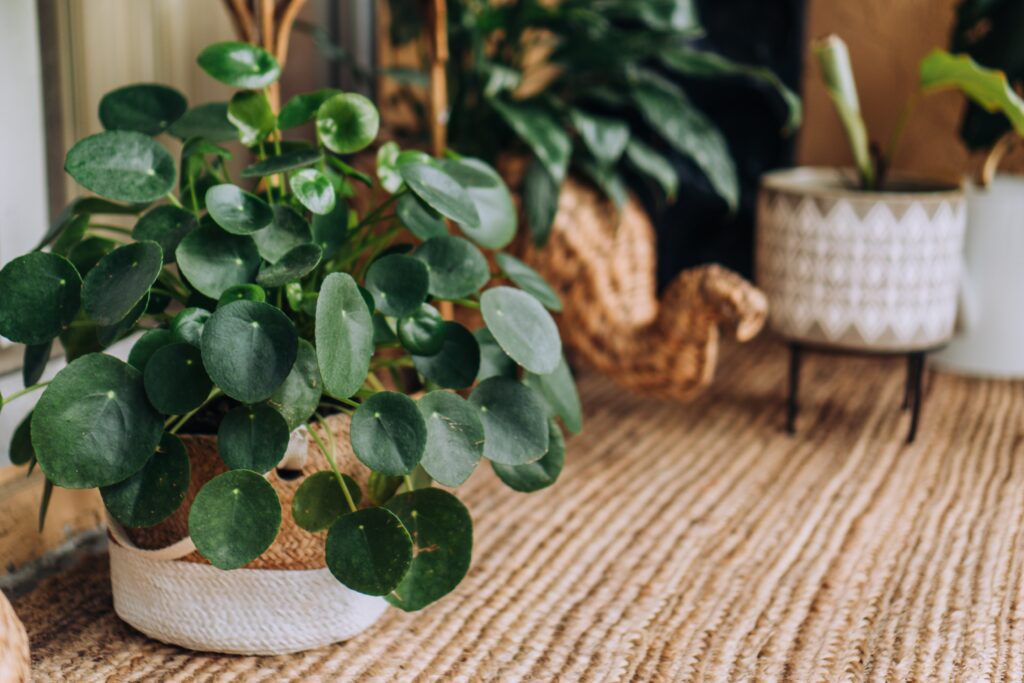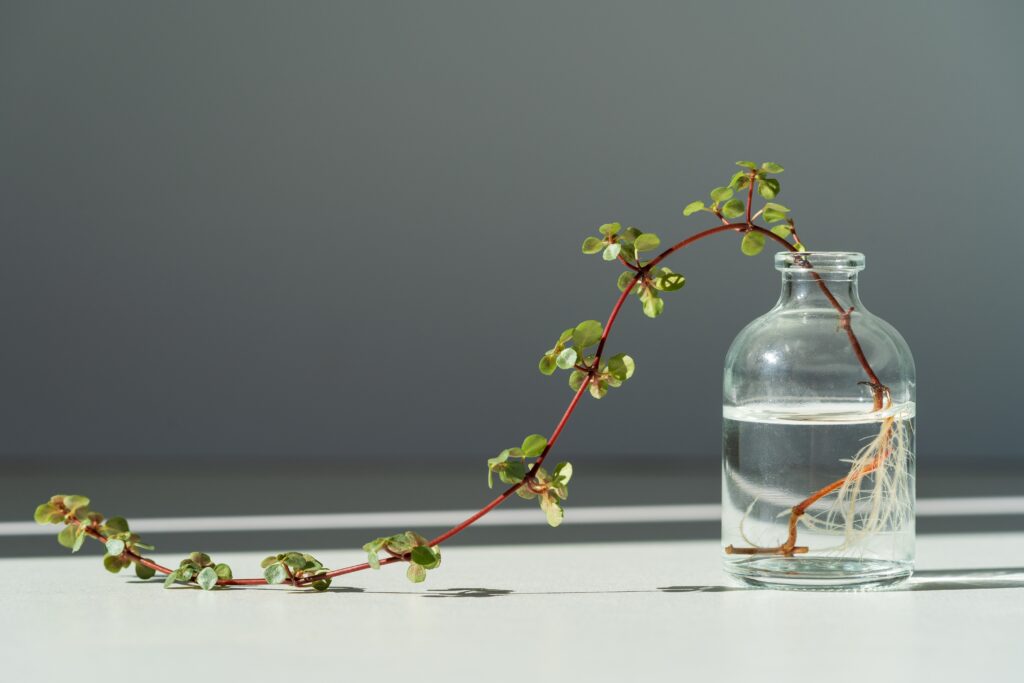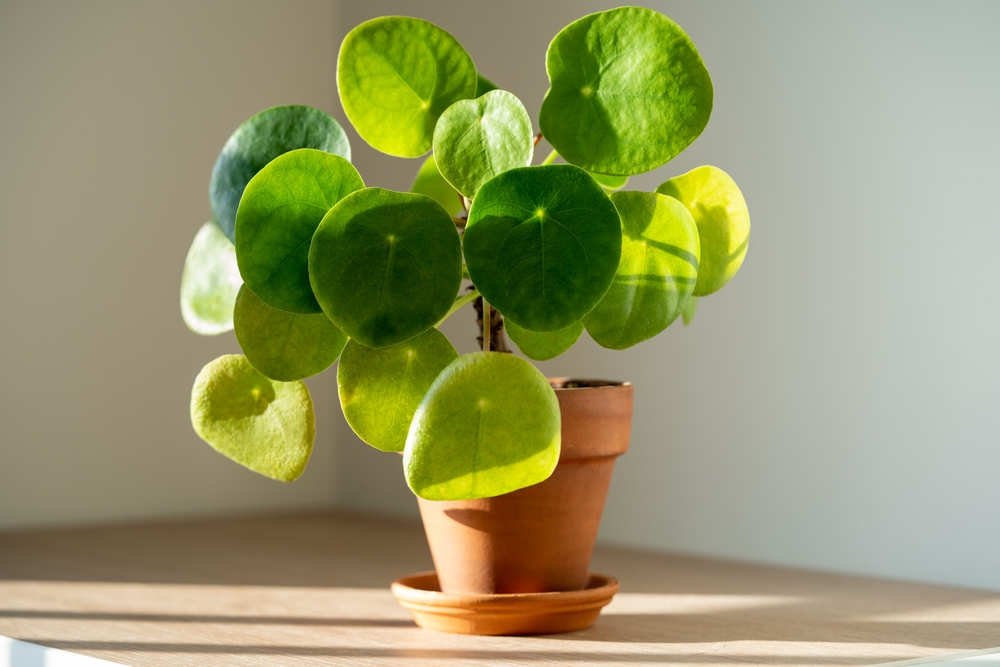Pilea plants are a popular choice for indoor gardeners due to their unique appearance and easy maintenance. However, one common issue that can arise is your pilea plant turning yellow. While some yellowing is natural, it can also be a sign of an underlying issue that needs to be addressed.
Understanding Pilea plants is essential in identifying the cause of yellowing leaves. These plants prefer bright, indirect light and well-draining soil. Overwatering can lead to root rot and yellowing leaves, while underwatering can cause leaves to wilt and turn yellow.
Additionally, nutrient imbalances and extreme temperature changes can also contribute to yellowing leaves.
Key Takeaways on Pilea Plant Turning Yellow
- Yellowing leaves on a Pilea plant can be a sign of an underlying issue.
- Understanding the proper care for Pilea plants is crucial in preventing yellowing leaves.
- Treating a yellowing Pilea plant may involve adjusting watering habits, addressing nutrient imbalances, and monitoring for pests and diseases.
See other reasons why your favorite houseplants are turning yellow here:
- Why Is My Ginger Plant Turning Yellow?
- Why Is My Calathea Turning Yellow?
- Why Is My Aloe Vera Turning Yellow?
Understanding Pilea Plants

Pilea plants, also known as Chinese money plants or pancake plants, are popular houseplants due to their unique appearance and ease of care. These plants are native to China and Vietnam and are characterized by their round, flat leaves that grow on long petioles.
Pilea plants are relatively small, growing to a height of 6 to 12 inches and a width of 6 to 8 inches. They are typically grown in small pots and are suitable for indoor spaces such as desks, shelves, or windowsills.
One of the reasons for the popularity of pilea plants is their ability to propagate easily. Pilea plants produce small offsets or “pups” that can be separated from the parent plant and grown into new plants. This makes them a great option for beginner gardeners or those looking to expand their plant collection.
Pilea plants are also known for their air-purifying qualities. They are effective at removing harmful toxins such as formaldehyde and benzene from the air, making them a great choice for improving indoor air quality.
While pilea plants are generally easy to care for, they do have some specific needs. They prefer bright, indirect light and well-draining soil. Overwatering can lead to root rot, so it is important to allow the soil to dry out slightly between waterings.
In addition to their unique appearance and ease of care, pilea plants are also known for their ability to bring good luck and prosperity. In Chinese culture, they are often given as gifts during the Lunar New Year and are believed to bring wealth and abundance to the recipient.
Signs of a Yellowing Pilea Plant
Pilea plants are known for their round, coin-shaped leaves that add a pop of green to any room. However, if you notice your pilea leaves turning yellow, it could be a sign that something is wrong. Here are some signs to look out for if you suspect your pilea plant is turning yellow:
- Yellowing leaves: The most obvious sign that your pilea plant is turning yellow is the yellowing of its leaves. The yellowing can occur on the entire leaf or just on the edges.
- Drooping leaves: Along with yellowing leaves, you may also notice that your pilea plant’s leaves are drooping. This could be a sign that the plant is not getting enough water or is being overwatered.
- Brown spots: Brown spots on the leaves of your pilea plant could be a sign of a fungal or bacterial infection.
- Wilting stems: If the stems of your pilea plant are wilting, it could be a sign that the plant is not getting enough water.
- Stunted growth: If your pilea plant is not growing as it should, it could be a sign that the plant is not getting enough nutrients.
If you notice any of these symptoms, it is important to take action to save your pilea plant. The next section will discuss some of the most common causes of a yellowing pilea plant and how to fix them.
Pilea Plant Turning Yellow – 6 Common Problems

Yellowing leaves on a Pilea plant can be a sign of various problems. Here are some of the most common causes of yellowing in Pilea plants:
1. Overwatering
Overwatering is the most common cause of yellowing leaves in Pilea plants. When the soil is too wet, the roots can’t get enough oxygen, and the plant can’t absorb nutrients properly.
This leads to yellowing leaves and even root rot. To avoid overwatering, make sure the soil is well-draining and the pot has drainage holes. Water the plant only when the top inch of soil is dry.
2. Improper Soil Moisture
Improper soil moisture can also cause yellowing leaves in Pilea plants. If the soil is too dry, the plant can’t absorb enough water and nutrients, which can cause the leaves to turn yellow and fall off.
On the other hand, if the soil is too wet, the roots can’t get enough oxygen, which can also lead to yellowing leaves. To maintain proper soil moisture, water the plant only when the top inch of soil is dry and make sure the pot has drainage holes.
3. Nutrient Deficiency
Yellowing leaves can also be a sign of nutrient deficiency in Pilea plants. The plant may not be getting enough nitrogen, potassium, or other micronutrients, which can cause the leaves to turn pale green or yellow. To avoid nutrient deficiencies, fertilize the plant regularly with a balanced fertilizer.
4. Lack of Sunlight
Pilea plants need bright, indirect light to thrive. If the plant is not getting enough sunlight, the leaves may turn yellow and fall off. Make sure the plant is placed in a bright location but not in direct sunlight, which can cause the leaves to burn.
5. High Humidity
Pilea plants prefer moderate to high humidity levels. If the air is too dry, the leaves may turn yellow and fall off. To increase humidity, mist the plant regularly or place it on a tray filled with water and pebbles.
6. Pests and Diseases

Yellowing leaves can also be a sign of pests or diseases in Pilea plants. The plant may be infested with spider mites, mealybugs, or other pests, which can cause yellowing leaves, brown spots, and leaf drop.
Fungal or bacterial diseases can also cause yellowing leaves and leaf spots. To prevent pests and diseases, keep the plant clean and healthy, and avoid overwatering.
Pests and Diseases Affecting Pilea
Pilea plants are susceptible to a variety of pests and diseases that can cause the leaves to turn yellow and eventually die. In this section, we will discuss some of the most common issues that can affect your Pilea plant.
Pests
Several pests can attack Pilea plants, causing yellowing of leaves and other symptoms. The most common pests that affect Pilea plants are spider mites, aphids, and mealybugs. These pests can cause damage to the leaves by sucking the sap from the plant, which can lead to yellowing, wilting, and leaf drop.
To prevent and control these pests, it is recommended to regularly inspect your Pilea plant and keep it clean by wiping the leaves with a damp cloth. You can also use insecticidal soap or neem oil to control these pests.
Fungal Issues
Fungal diseases can also cause yellowing of leaves in Pilea plants. Fungal leaf spots, gray mold, and botrytis blight are some of the most common fungal diseases that can affect your Pilea plant.
Fungal leaf spots are caused by various fungi that can infect the leaves and cause yellowing and brown spots. Gray mold is a common fungal disease that affects the stems and leaves of Pilea plants, causing them to turn yellow and eventually die.
Botrytis blight is another fungal disease that can cause yellowing of leaves, and it is caused by a fungus that thrives in moist conditions.
To prevent and control fungal diseases, it is recommended to keep your Pilea plant clean and dry. Avoid overwatering and provide good air circulation around the plant. If you notice any signs of fungal disease, snip off the affected leaves and dispose of them properly.
Bacterial Problems
Bacterial wilt and Pseudomonas cichorii are two bacterial diseases that can cause yellowing of leaves in Pilea plants. Bacterial wilt is a contagious disease that can quickly spread from plant to plant, causing the leaves to wilt and turn yellow.
Pseudomonas cichorii is another bacterial disease that can cause yellowing of leaves, and it is caused by a bacterium that thrives in moist conditions.
To prevent and control bacterial diseases, it is recommended to keep your Pilea plant clean and dry. Avoid overwatering and provide good air circulation around the plant. If you notice any signs of bacterial disease, snip off the affected leaves and dispose of them properly.
Pythium Root Rot

Pythium root rot is a fungal disease that can cause yellowing of leaves in Pilea plants. This disease is caused by a fungus that thrives in wet soil conditions. The fungus attacks the roots of the plant, causing them to rot and die. As a result, the leaves of the plant turn yellow and wilt.
To prevent and control pythium root rot, it is recommended to avoid overwatering your Pilea plant. Provide good drainage and avoid letting the soil stay wet for too long. If you notice any signs of pythium root rot, remove the affected plant and dispose of it properly.
Mold Growth
Mold growth is another issue that can cause yellowing of leaves in Pilea plants. Mold can grow on the leaves and stems of the plant, causing them to turn yellow and eventually die. Mold growth is usually caused by high humidity and poor air circulation around the plant.
To prevent and control mold growth, it is recommended to keep your Pilea plant clean and dry. Avoid overwatering and provide good air circulation around the plant. If you notice any signs of mold growth, remove the affected leaves and dispose of them properly.
Treating a Yellowing Pilea Plant
When a Pilea plant starts turning yellow, it is a sign that something is wrong. To treat a yellowing Pilea plant, it is necessary to identify the underlying cause and take the appropriate action.
Identifying the Cause of Yellowing Pilea Plant
There are several reasons why a Pilea plant may turn yellow. It could be due to overwatering, underwatering, too much light, lack of nutrients, fungal or bacterial infections, insect infestation, or other environmental factors.
To identify the cause of yellowing Pilea plant, one should examine the plant carefully and look for any signs of pests or diseases. Check the soil moisture level and make sure the plant is getting enough water.
Check the light conditions and make sure the plant is not getting too much or too little light. If the plant is not getting enough nutrients, consider fertilizing it.
Treating Yellowing Pilea Plant
Once the underlying cause of yellowing Pilea plant has been identified, it is time to take action. Here are some treatments that can help:
- Neem oil: If the plant is infested with pests, neem oil can be used to control them. Neem oil is a natural insecticide that is effective against a wide range of pests.
- Fungicide: If the plant has a fungal infection, a fungicide can be used to control it. There are many different types of fungicides available, so choose one that is appropriate for the type of fungus affecting the plant.
- Botrytis blight: If the plant has gray mold or botrytis blight, remove the affected leaves and treat the plant with a fungicide.
- Powdery mildew: If the plant has powdery mildew, treat it with a fungicide and make sure the plant is getting enough light and air circulation.
- Chlorophyll: If the plant is not getting enough chlorophyll, consider moving it to a brighter location or supplementing its light with artificial light.
- Success: With proper treatment, a yellowing Pilea plant can recover and return to its healthy state.
- Odor: If the plant has a bad odor, it could be a sign of root rot or other fungal infection. Treat the plant with a fungicide and make sure it is not overwatered.
- Humidifier: If the air is too dry, consider using a humidifier to increase the humidity around the plant.
- Leaf drop: If the plant is dropping leaves, it could be a sign of overwatering or underwatering. Adjust the watering schedule accordingly.
Frequently Asked Questions

Why are my Pilea leaves turning yellow?
Yellow leaves on Pilea plants can be caused by several factors, including overwatering, underwatering, lack of sunlight, or pests. One of the most common causes of yellowing leaves is overwatering.
Pileas prefer to be kept moist but not waterlogged, so make sure to let the soil dry out slightly before watering again.
What causes Pilea leaves to turn white?
White spots on Pilea leaves can be a sign of powdery mildew, a fungal disease that thrives in humid conditions. This disease can be prevented by improving air circulation around the plant and reducing humidity levels. If your Pilea is already infected, you can treat it with a fungicide.
How can I prevent my Pilea leaves from turning brown?
Brown spots on Pilea leaves can be caused by a variety of factors, including overwatering, underwatering, or inconsistent watering.
Make sure to water your Pilea regularly and keep the soil moist but not waterlogged. Brown spots can also be caused by pests or diseases, so inspect your plant regularly for signs of infestation.
What is the best fertilizer for Pilea?
Pileas do not require a lot of fertilizer, but a balanced, all-purpose fertilizer can help promote healthy growth. Use a fertilizer with equal amounts of nitrogen, phosphorus, and potassium, and apply it every two to four weeks during the growing season.
Should I remove yellow leaves from my Pilea?
Yes, it’s a good idea to remove yellow leaves from your Pilea to prevent the spread of disease and pests. Use clean, sharp scissors or pruning shears to remove the affected leaves, making sure to cut as close to the stem as possible.
What are the signs of an overwatered Pilea plant?
Overwatering can cause the leaves of your Pilea plant to turn yellow or brown and can lead to root rot. Other signs of overwatering include wilting, soft or mushy leaves, and a foul odor coming from the soil. If you suspect that your Pilea is overwatered, let the soil dry out completely before watering again.

Hey, I’m Lisa and I’ve been an avid gardener for over 30 years. I love writing, talking and living in the garden! Feel free to connect with me on my socials below


